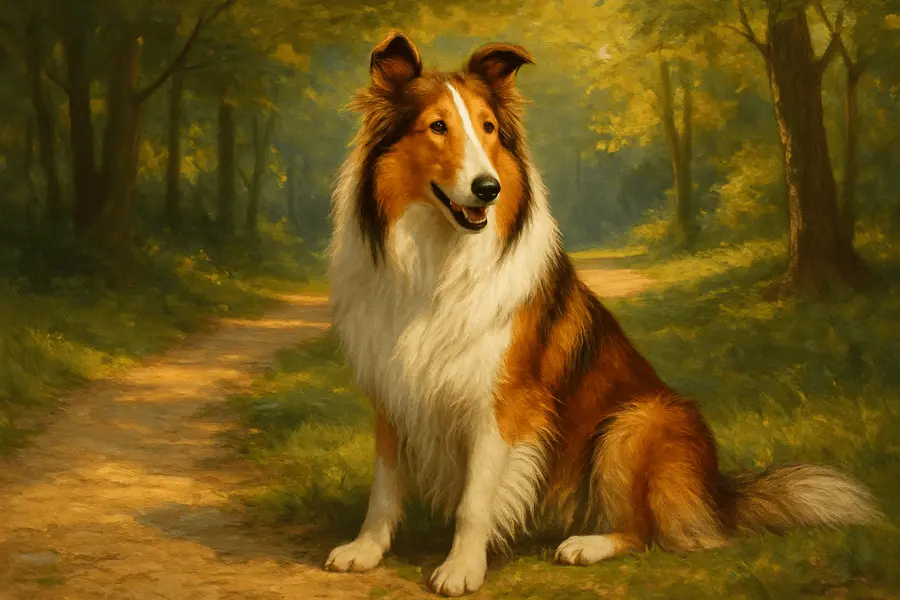When we talk about iconic dogs in pop culture, one name always comes to mind: Lassie. More than just a dog, she is a symbol of courage, loyalty, and intelligence that transcended generations. From the silver screen to television, Lassie has become a legend.
From literature to the big screen
Lassie’s origins go back to a short story by Eric Knight, later expanded into the novel Lassie Come-Home in 1940. The success of the book inspired the MGM studio to create a film adaptation.
In 1943, Lassie Come Home hit theaters, starring a young Roddy McDowall and introducing the world to a beautiful Rough Collie named Pal, who would become the first and most famous Lassie. The film was a critical and commercial success, showcasing the loyalty and resilience of a dog who crosses miles to reunite with her young owner.
Pal, the first Lassie
Although Lassie is portrayed as a female dog, the role has always been played by male dogs due to their larger size and fuller coats. Pal’s performance was so touching that he starred in six more Lassie films and cemented the character’s place in Hollywood history.
Lassie on television: a national phenomenon
In 1954, Lassie made her television debut in Lassie, a series that would run for 19 seasons and over 500 episodes. This made it one of the longest-running scripted television series of its time.
The show followed Lassie as she helped different families and children, often rescuing people, guiding them out of danger, or alerting adults to emergencies. Her moral compass and heroic nature became a weekly lesson for millions of viewers.
Lassie received numerous awards and honors, including a star on the Hollywood Walk of Fame. She also met several U.S. Presidents and appeared in numerous public service campaigns.
A cultural and emotional symbol
Lassie is more than entertainment — she represents values like trust, loyalty, and protection. Her name became shorthand for any heroic or smart dog. For many families, Lassie was a first emotional connection to the concept of courage and devotion.
Even people who’ve never watched an episode or seen the original films recognize the name. That level of cultural penetration is rare and signifies how Lassie became more than a character — she became a myth.
The legacy continues
Today, Lassie is remembered not only through reruns and merchandise but also through her influence on generations of dog-centered stories. Every loyal canine in media owes something to her.
Whether it’s helping Timmy out of a well or simply standing firm in a moment of danger, Lassie’s image endures as the ultimate good dog — and one of the most enduring characters in American entertainment history.

